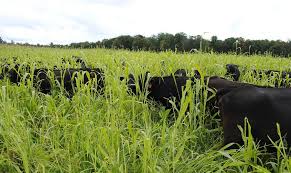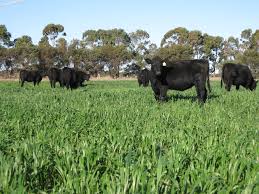Pasture species are incorporated into other crops to provide optimum benefits, ranging from environmental protection to various economic advantages. Both native and improved pasture species can be used for this purpose.
The major benefit of this system is the increase in grain and forage yields of the crops (e.g., maize), which can translate into improved economic gains for farmers. However, in certain situations, a drastic drop in grain yield may occur, particularly when both the crop and pasture species are planted on the same land on the same day.
Read Also: Feijoas: History, Nutrition, Health Benefits and Growing Guide
1. Pastures Integrated with Field Crops

Pastures are integrated into field crops such as cereal crops (e.g., maize, millet, sorghum). This practice has been long established in the Nigerian farming system.
For instance, farmers in northern Nigeria have incorporated groundnut into millet or sorghum fields to avoid complete crop failure due to drought and to ensure higher grain yields of the cereal crops.
The pasture species provide additional nitrogen to the cereal crops through biological processes, which helps maintain soil health.
2. Pastures Associated with Tree Crops

Improved grasses and legume pasture species can be planted in plantations of coconut, oil palm, rubber, and fruit trees. This practice helps replace weeds and native pasture species that are commonly found in such areas.
The pasture species can be used indirectly for the ‘cut and carry system’ of livestock feeding or directly for grazing. The following are advantages of this system:
i. Higher returns from combined land use
ii. Increased nut recovery in coconut plantations
iii. Reduction in weed population
iv. Increased income and financial stability for farmers
However, a challenge arises due to competition for nutrients between the pasture species and tree crops. Consequently, additional fertilizers are required to supply the necessary nutrients. Moreover, reduced light penetration caused by the canopy cover may affect the growth of pasture species beneath.
Read Also: Pawpaws: History, Nutrition, Health Benefits and Growing Guide
3. Ley Pastures in Crop Production

Pasture species are sometimes planted alongside field crops. Browse plants such as Leucaena leucocephala, Gliricidia sepium, and Gmelina aborea are commonly used for this purpose.
The main difference between ley pastures and pastures associated with crops is that ley pastures primarily use browse plants as pasture species, as opposed to other grass and legume species. These types of pastures are typically established for temporary use and offer the following advantages:
i. Improvement of soil fertility
ii. Control of weeds, disease pathogens, and pests
iii. Provision of fencing materials
iv. Increased yields of cereal crops
v. Contribution to combating climate change
In this article, the various types of pastures associated with crops have been explored, along with their major differences and advantages.
Do you have any questions, suggestions, or contributions? If so, please feel free to use the comment box below to share your thoughts. We also encourage you to kindly share this information with others who might benefit from it. Since we can’t reach everyone at once, we truly appreciate your help in spreading the word. Thank you so much for your support and for sharing!






